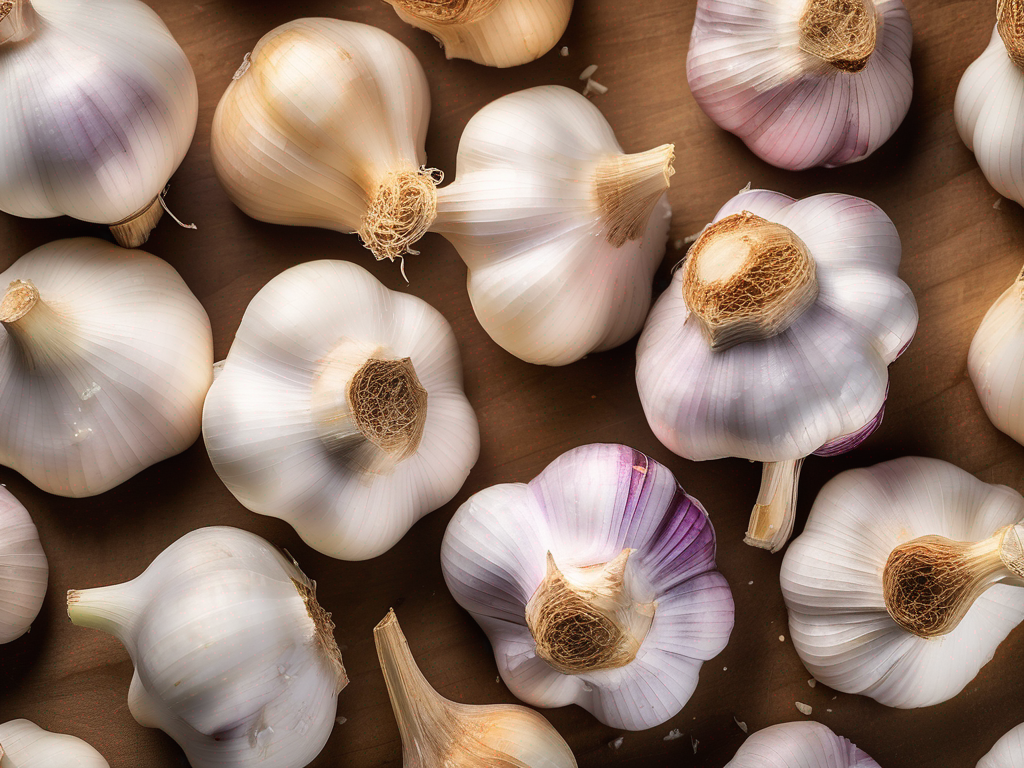
How to Tell If Chopped Garlic Has Gone Bad
Get Your Free Food Safety Cheat Sheet
30 most common foods with instant answers. Print it and stick it on your fridge—completely free!
How to Tell If Chopped Garlic Has Gone Bad
Garlic is a staple ingredient in many cuisines around the world, known for its unique flavor and numerous health benefits. Chopped garlic is a convenient form of this aromatic bulb, but like any food product, it can spoil over time. In this blog post, we will explore how to determine if chopped garlic has gone bad and is no longer safe to eat. (Garlic chopped)
Signs of Spoiled Chopped Garlic
Chopped garlic, like any perishable food item, can go bad if not stored properly or if it is past its expiration date. Here are some signs that your chopped garlic may have spoiled:
1. Change in Color
- Look for any discoloration, such as browning or dark spots on the chopped garlic. Fresh garlic should be white or off-white in color.
2. Unpleasant Odor
- Spoiled chopped garlic will have a strong, foul odor that is different from its usual pungent aroma. If it smells rotten or unpleasant, it is best to discard it.
3. Mold Growth
- Check for any signs of mold on the chopped garlic. Mold can appear as fuzzy patches or greenish spots, indicating that the garlic has gone bad.
4. Slimy Texture
- Spoiled chopped garlic may develop a slimy or mushy texture. Fresh chopped garlic should have a firm and crisp texture.
5. Off Taste
- If the chopped garlic tastes sour, bitter, or off in any way, it is likely spoiled and should not be consumed.
Proper Storage of Chopped Garlic
To ensure the freshness and safety of your chopped garlic, it is essential to store it correctly. Here are some tips for storing chopped garlic properly:
1. Refrigeration
- Store chopped garlic in an airtight container or resealable bag in the refrigerator. This helps prevent bacterial growth and extends the shelf life of the garlic.
2. Avoid Moisture
- Keep chopped garlic away from moisture, as excess moisture can cause it to spoil more quickly. Make sure the container is dry before storing the garlic.
3. Use Airtight Containers
- Airtight containers help preserve the flavor and freshness of chopped garlic. Mason jars or plastic containers with tight-fitting lids are ideal for storing chopped garlic.
4. Labeling
- Always label the container with the date when the garlic was chopped or the expiration date of the product. This helps you keep track of its freshness.
Tips for Safe Handling of Chopped Garlic
In addition to proper storage, it is important to handle chopped garlic safely to prevent contamination and spoilage. Here are some tips for safe handling of chopped garlic:
1. Wash Hands
- Always wash your hands before and after handling chopped garlic to prevent the spread of bacteria.
2. Clean Cutting Board and Knife
- Use a clean cutting board and knife to chop garlic, and wash them thoroughly with hot, soapy water after use to avoid cross-contamination.
3. Avoid Cross-Contamination
- Do not let chopped garlic come into contact with raw meat, poultry, or seafood to prevent the spread of harmful bacteria.
4. Use Fresh Garlic
- Whenever possible, use fresh garlic instead of pre-chopped garlic to ensure quality and freshness in your dishes.
Conclusion
In conclusion, it is important to be able to recognize the signs of spoiled chopped garlic to avoid consuming unsafe food. By following proper storage practices, handling guidelines, and being mindful of the freshness of the garlic, you can ensure that your dishes are safe and delicious. Remember to trust your senses when it comes to assessing the quality of chopped garlic, and when in doubt, it is always better to err on the side of caution and discard any questionable garlic. [Garlic chopped](/food/garlic chopped) is a versatile ingredient that can add flavor to a wide range of dishes, so make sure to keep it fresh and safe for your culinary creations. (Garlic chopped)
Authoritative Food Safety References
These agencies and university labs inform every tip and health precaution we publish.
USDA FoodKeeper – Cold Storage Guidelines
Official refrigerator, freezer, and pantry timelines maintained by the U.S. Department of Agriculture.
Visit USDA FoodKeeperFDA Produce Safety Rule & Grower Guidance
Field-to-fridge handling practices that prevent contamination of fruits, vegetables, and leafy greens.
Visit FDA Produce SafetyCDC Foodborne Illness Prevention Hub
Surveillance-backed guidance on pathogens, symptoms, and steps to reduce foodborne illness risk.
Visit CDC Food SafetyUC Davis Postharvest Technology Center
University research detailing optimal storage atmospheres for produce after harvest.
Visit UC Davis PostharvestPenn State Extension – Home Food Preservation & Safety
Peer-reviewed extension bulletins on safe canning, chilling, and reheating practices.
Visit Penn State ExtensionGet Your Free Food Safety Cheat Sheet
30 most common foods with instant answers. Print it and stick it on your fridge—completely free! Want more? Upgrade to the complete guide with 70+ foods.
Scan your food directly and get instant safety info using our AI-powered camera feature.